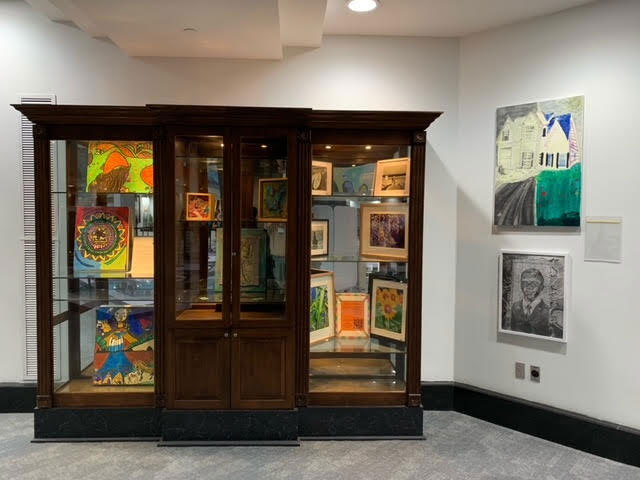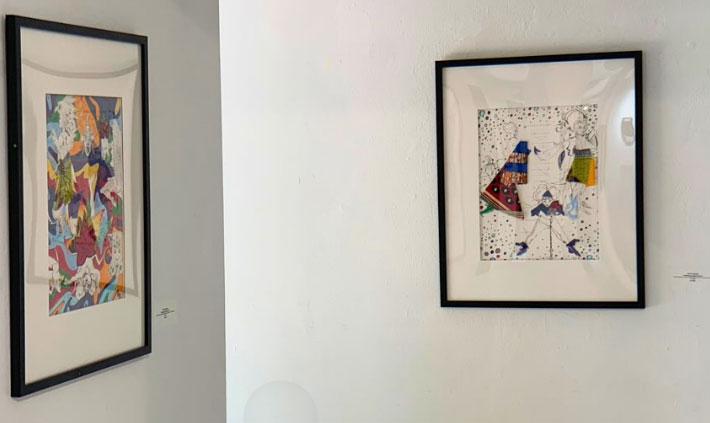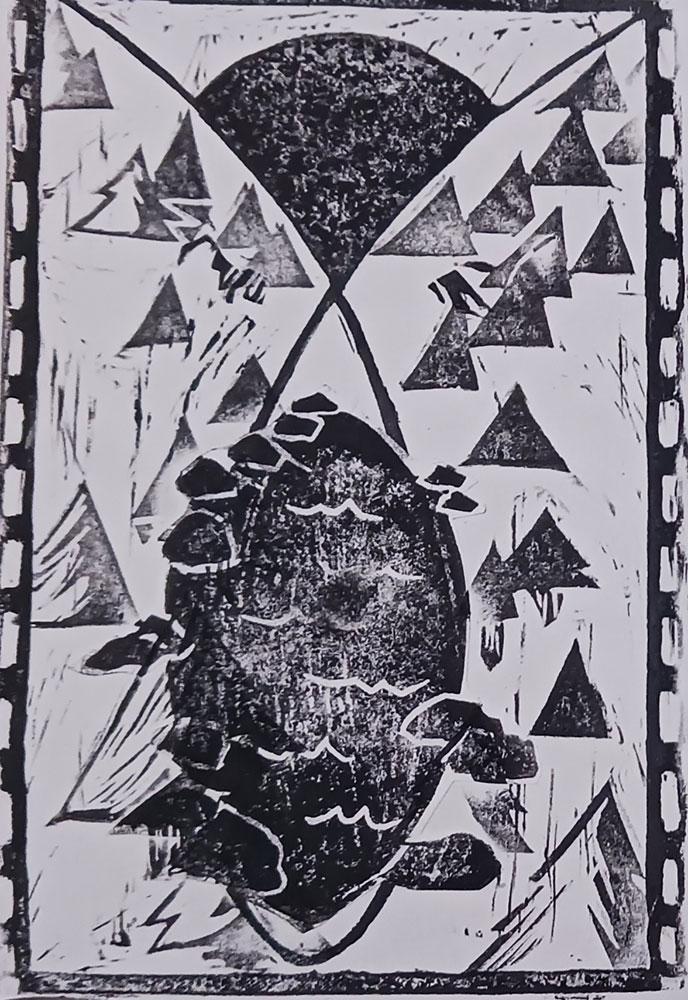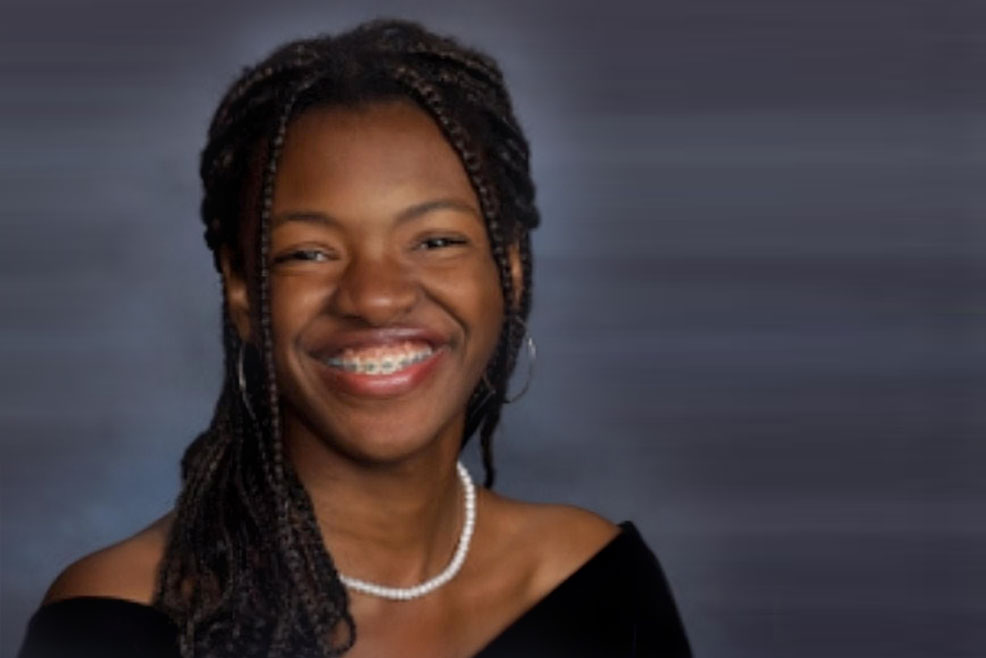I believe art is healing. Healing requires reflection. When we reflect through art, we can better ourselves.
Born: Boston, Massachusetts
Now: Mooresville, North Carolina
@ruthsleuthed | website
INTERVIEW
At Duke University (Durham, NC), you studied Fine Arts & Biophysics. How did this background influence you, and how did your roots shape your future art?
Duke has had a substantial impact on my life. The school I attended previously was located in Durham, and we received a lot of our furniture from Duke University as donations. I remember looking at them and thinking “Man, I need to level up.” I suppose Duke ended up helping me accomplish this within my artistic journey. I studied under a professor at the Duke Carmichael lab, completing research in biomedical sciences. My research centered on the influence mutation in target genes had on sickle cell anemia. These studies enhanced my passion for science and shifted my view of art. Simultaneously, I was working on curating an exhibit at the Nasher Museum. The museum is one of my favorites, and exceptionally beautiful, but the visuals were not what kept me coming back. The stories drew me in. I had never seen a museum so effectively curate narratives in the way the Nasher did. Together, these two experiences helped me realize that my passions for arts and sciences weren’t as separate as I previously believed and that like a museum, science can be elevated by stories of discoveries and questions. This is the kind of art I aim to create and strive to influence with each medium I tackle.

Can you talk about the themes you work on and explore in your art?
As I mentioned before science and the studies of function have huge influences on my work. As a result, every piece are create strives to either pose or answer a question I have or that I’ve been asked. My most prevalent themes are culture and perspective. I try to find different framings to address these themes. Thousands of combinations can be made from limited options, but often we can’t find these combinations unless we try a new format. This is one reason I prefer to work in an assortment of mediums. In the past, my work has focussed on Afrofuturism addressing the question of what different societies might have looked like without the effects of colonization. Now, my most recent works explore the answer to the question: “Do people’s existence have inherent value?” I believe so.

Where do you draw inspiration from? How does the influence of culture and your environment manifest in your works?
Sometimes I look at a work and think. “Now, that is just too black.” I don’t necessarily think of it negatively, but in the sense that I wonder if I can take a step back and truly separate myself from blackness in art. Then I remember, that art is healing and that I use art to process. As I go through my daily life, too much of it has affected my identity as a black woman to not process it through my art. This I would say is where I primarily draw inspiration from what I am processing. At times I create a series and noticing recurring imagery is what helps me realize what I need to address that day. Since culture and my environment are two elements of my life that I feel I have analyzed the most and therefore have the best understanding of, I typically use them as frames to explore other themes and questions that I am still unraveling. This is why many of my series or even individual works have several intersections and themes. Systems and ideologies are intricately connected, and so are the results of these systems and ideologies. I work to reveal this truth with my work through the overlap.

Riziki, you actively incorporate different media. How do you choose the material when working on a project?
When I first started diverging from my comfort zone, I would pick a medium I wanted to explore and then work on a concept around the medium that I believed suited the material. This is how I created works such as I Was Born by the Rock and the River. I knew I wanted to weave and create a nature scene, but the themes associated gradually revealed themself as I worked, and then I began to emphasize those themes. Recently, I have found myself being much more meticulous about the concept behind a piece before I decide which medium I will use. I understand mediums as different languages and the pieces as stories. You wouldn’t want to tell a story in a language that is unintelligible to your audience or perhaps works better in another. The other thing I often consider is how comfortable I am with the medium. If I am less comfortable with the medium, it can be a determining factor in whether I do or do not use it. For instance, I elected not to the Challenging Beauty series in paint, because my lack of experience with paint would have muddled the message. However, for this exact reason, I completed To Be in Gouache, because I believe it created an unapologetic quality.

You have been actively participating in exhibitions since 2023. Which exhibition has been the most significant for you?
I would have to say that the most significant exhibition to me so far has been the Atrium Gallery showcase. It has a special place in my heart because it is in my home state, and close to my hometown. Additionally, the McColl Art Center had always seemed like such a titan to me that it was wonderful to not only see my art accepted to the exhibition but to be welcomed into an art community with other artists who I could learn from. Lastly, the showing is at the Atrium Health Center, and I love seeing art galleries utilizing unconventional spaces for exhibitions.

What project are you currently working on?
Currently, I am working on a short film that I hope to finish around November. It will be an approximately three-minute animation focusing on the everyday dismissal of pain Black women face. The film has been a passion project of mine that I always wanted to do and always pushed off. I kept telling myself, “Not now, but I start later when I have the time.” Well, when else will I have more time? It has only been about 2 months since I began this project, but it has taught me that sometimes the best way to get things done is just to start them. A painfully uninspired idea, but not every truth is wrapped in prose.

A traditional question: What advice would you give to emerging artists? How can they find their style and theme to work on? Does the medium matter?
Cliche, but do not stop trying. If I gave up when I wanted to, my CV would be entirely blank. I made a document of about 60 different art opportunities and just kept applying. It wasn’t easy, and I hardly got all of them, not even half, but that number will get larger and larger the more you work toward it. As for technical advice, see what you truly enjoy creating and can work on for hours. Compile references and art from your favorite artists and spend time analyzing why you like it so you can incorporate that into your style. Especially if you add in allusions to what grew you into the person you are.
As for technical advice, see what you truly enjoy creating and can work on for hours. Compile references and art from your favorite artists and spend time analyzing why you like it so you can incorporate that into your style. Especially if you add in allusions to what grew you into the person you are.
This way, your work will register as unique even if it takes heavy inspiration from other things. Lastly, I believe the medium matters. Certain mediums work better for certain expressions—you usually wouldn’t want to make a coat out of clay—but that does not mean you can not still achieve a particular expression with an unconventional medium. It may even add an interesting twist!